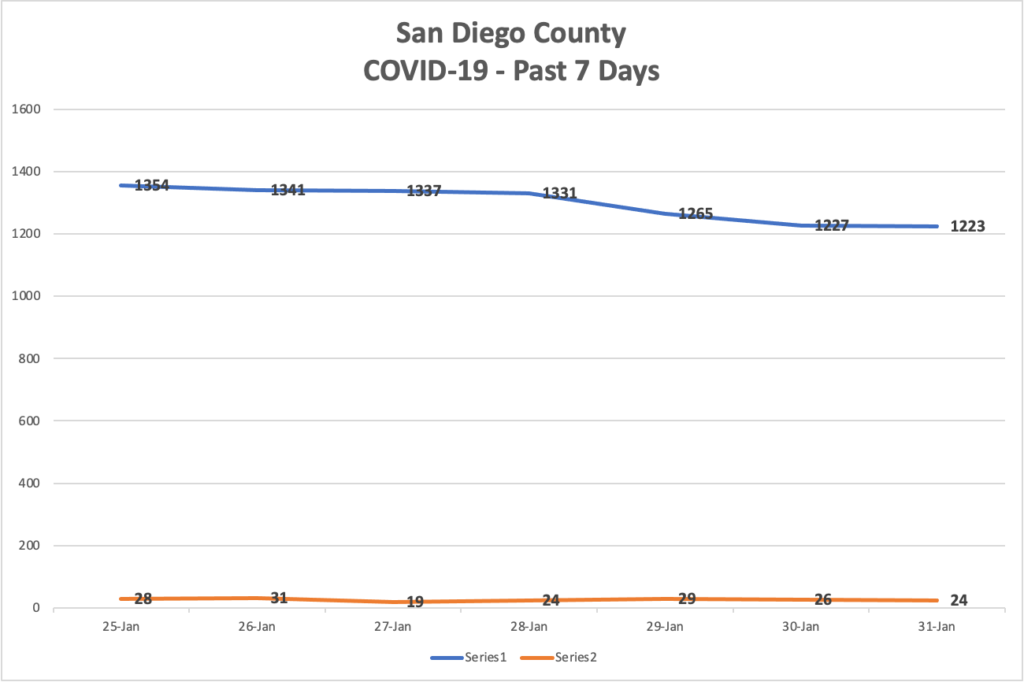In the wake of the recent COVID-19 surge, due in large part to the highly transmissible omicron variant, it remains to be seen what the future holds. This fourth surge has shown us that we must be prepared for anything. After plateauing for a bit, hospitalizations started to climb after the holidays, steadily increasing for a few weeks yet not quite reaching the levels of last winter’s surge.
But as we near the two-year anniversary of the pandemic, it seems — for the first time in a while — there may be some good news on the horizon. COVID-19 positivity rates are dropping, and hospitalizations seem to have leveled off or be slightly decreasing, an early sign that perhaps the unprecedented omicron wave is slowing.
The seven-day trends for both San Diego and Imperial County hospitalizations are moving in the right direction, and we remain encouraged that that they will keep going down.


Current modeling is even more positive, with hospitalizations expected to trickle down to 458 and 63 in San Diego and Imperial counties, respectively, by the beginning of March. Despite the data, truly only time will tell.
But as the numbers begin to fall, it is hoped that will take the pressure off the front lines as well. Ambulance patient offload times remain a top concern as emergency departments continue to deal with a crush of patients, and the HASD&IC and CHA teams are working at both the local and state levels to try and alleviate the situation.
At the same time, CHA continues to advocate for financial relief for hospitals strained by the pandemic. Late last month, CHA issued an alert and sent a letter to the California congressional delegation that asked Congress to immediately distribute and replenish the Provider Relief Fund, provide additional time for repayment of Medicare Accelerated and Advance Payment Program loans, extend the delay in sequestration cuts for at least the duration of the public health emergency, and address workforce shortages with policy solutions and funding.
As always, we are here to help, so please don’t hesitate to reach out with any questions or concerns. And if you have thoughts on where the pandemic is headed — where you see things in three, six, nine months (or longer) — we would love to hear.
